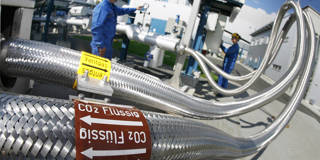America’s approach to carbon pricing makes use of carrots (subsidies), while Europe’s approach emphasizes sticks (taxes). It is difficult to say which approach is better for the climate, but it is easy to foresee major trade and political frictions resulting from these opposing approaches.
SOFIA/MILAN – Economists have long argued that regulation alone cannot bring about the reduction in global greenhouse-gas emissions that is needed to curb climate change; a carbon price is also essential. So far, dozens of carbon-pricing arrangements, mostly tax-based schemes, have been implemented around the world. But, when it comes to impact, the devil is in the details.

SOFIA/MILAN – Economists have long argued that regulation alone cannot bring about the reduction in global greenhouse-gas emissions that is needed to curb climate change; a carbon price is also essential. So far, dozens of carbon-pricing arrangements, mostly tax-based schemes, have been implemented around the world. But, when it comes to impact, the devil is in the details.